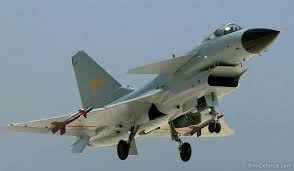But Chinese Companies Thrive in Us Market…
The world seems to be moving backward. The movement is 30 years backwards, when words like ballistic missile defence shields, deterrent nuclear build-up and other words to describe an unpeaceful, unstable world were commonplace.
Hostilities between communist East Europe and the capitalist West had forced the world into two camps of military build-ups. It was a period of the cold war; a silent war which waited for only one lunatic to take charge of a nation to explode.
This June of 2014 has witnessed a resurgence of the relics of the cold war. Media reports describe efforts in the US to maintain bigger military spending to counter balance the growing military capability of the People’s Republic of China.
The Chinese government in March of this year announced a 12.2 percent increase in military spending to $132 billion. That followed last year’s 10.7 percent increase to $114 billion, giving China the second-highest defense budget for any nation behind the U.S., which spent $600.4 billion on its military last year.
This perceived threat has pushed the US into a fighting mode. Bloomberg News has reported that the US Ministry of Defence, which is also called The Pentagon has made an assessment which indicates the Chinese military is improving its doctrine, training, weapons and surveillance to be able to conduct more sophisticated attacks against the U.S. and other adversaries.
The Pentagon says in its annual report on China, that after jamming communications and mounting other forms of electronic and cyberwarfare, stealthy Chinese aircraft, drones and missiles could attack U.S. warships, aircraft and supply craft.
Last year, the Chinese military “emphasized training under realistic combat scenarios” and the ability to execute long-range mobility operations, such as maritime exercises that involved all three Chinese Navy fleets, the report found.
The Pentagon said China’s most significant military developments last year included air-defense upgrades to destroyers and frigates; testing of its Y-20 transport to fly ground forces quickly across great distances; at least eight launches to expand its intelligence and surveillance from space; and a “probable” Chinese drone conducting reconnaissance in the East China Sea.
China is also starting to integrate anti-radar missiles into its fighter-bomber fleet, the report said.
The Chinese Navy continues to develop long-range, over-the-horizon radar that, in coordination with satellites, is intended to “locate targets at great distances from China” for targeting by its DF-21D anti-ship ballistic missile, according to the Pentagon. The report said China continues to field a “limited but growing number” of the missiles. It also continues to develop the stealthy J-20 fighter and J-31 that are “similar in size to a U.S. F-35 fighter,” the report said, without comparing capabilities.
However the report, which is required by Congress, doesn’t suggest that such attacks are likely, only that the Chinese military last year continued to demonstrate new capabilities similar to those the U.S. began embracing at least 20 years ago, and that the build-up is occurring as China increasingly asserts itself in territorial disputes with its neighbors who are mostly US allies.
Bloomberg News quotes Ni Lexiong, director of national defense policy research at Shanghai University of Political Science and Law as saying “although the Pentagon was overstating the Chinese military threat to avoid more cuts in its budget, the speed of the People’s Liberation Army’s modernization has indeed exceeded western countries’ expectation. “The gap is between 20 and 30 years,” he said. “At the current pace, China may catch up with the U.S. in 40 years, and may start to get ahead in 60 years.”
But China views the Pentagon’s annual report as a relic of the Cold War, when the U.S. prepared similar studies on the Soviet military threat, said Song Xiaojun, a Beijing-based military commentator for state television CCTV. The commentator said Beijing’s anger is over “the fact that the U.S., whose military expenditure accounts for more than 4 percent of GDP and still runs the world’s biggest defense budget even with the proposed cutbacks, is accusing China of splashing out on the armed forces.”
The US says China is using its growing military muscle to aggressively assert its territorial claims in neighboring seas. In November, China declared an Air Defense Identification Zone over a stretch of sea that overlaps with Japanese and South Korean zones. China is also embroiled in disputes with Vietnam and the Philippines in the South China Sea that have led to confrontations.
The Chinese Navy last year commissioned nine new Jiangdao-class corvettes armed with anti-ship cruise missiles for operations close to shore, “especially in the South China Sea and East China Sea,” the Pentagon said. The Pentagon’s test office and internal Navy reviews have warned that the U.S.’s new Littoral Combat Ships are vulnerable to such weapons.
The report may provide new fodder for U.S. congressional advocates of more defense spending who argue for improving naval capabilities to blunt Chinese advances through systems such as Boeing Co. (BA)’s EA-18G Growler electronic-warfare plane and Raytheon Co. (RTN)’s new Air and Missile Defense Radar and Next Generation Jammer.
China “now has incredible economic clout and has become adept at applying pressure below the threshold that would trigger a strong military response from the U.S. or its allies,” said John Blaxland, a senior fellow at the Australian National University’s Strategic and Defence Studies Centre in Canberra. “China may well be critical of this report but they’re probably secretly happy that that’s the perception.”
CHINESE E-COMMERCE BOOMS IN AMERICA
In the meantime, Bloomberg News reports that Chinese companies making their U.S. stock-market debuts in the past year have rewarded their buyers with the best returns among global peers, fueled by demand for Internet and e-commerce shares from Asia’s biggest economy.
The 10 biggest Chinese companies that completed initial public offerings in the U.S. in the past 12 months have returned an average of 44 percent since their offer dates, compared with 25 percent for all U.S. IPOs of more than $100 million in the same period, according to data compiled by Bloomberg.
58.com Inc. (WUBA), which provides online classifieds, has surged 140 percent since its October IPO and Autohome Inc. (ATHM), a car information website, has gained 110 percent since December. The new Chinese technology companies are benefiting from investor bets that they can profit from the country’s expanding consumer sector and grow quickly even with less state help.
Companies such as Alibaba Group Holding Ltd., China’s largest online marketplace which filed for a U.S. listing last month, may get a boost as President Xi Jinping seeks to increase the role of services in the economy, while reducing its reliance on the credit-driven construction that has propelled growth.
“There is a lot of investor excitement around the group, especially ahead of Alibaba,” Kurt Ayling, a technology, media and telecom analyst at New York-based Susquehanna Financial Group LLP, said in a June 6 interview. “Investors generally feel they need some sort of exposure in China once again.”
Online Shopping
Of the 16 Chinese IPOs on U.S. exchanges over the past year, 12 are by companies focused on Internet technology or web-based services including online shopping, according to data compiled by Bloomberg. Retail site JD.com Inc. (JD) attracted $1.78 billion in a May offer and social media platform Weibo Corp. completed a $285.6 million debut in April as Alibaba prepares what may be the biggest IPO ever.
The CSI Overseas China Internet Index (HSCEI), a gauge of Chinese dot-com companies, has rallied 6.6 percent this year, compared with a 4.2 percent drop in the Dow Jones Internet Composite Index.
“If you look at the technology and Internet sector, investors were getting hit hard in the U.S. during the first half of the year and needed to search for returns elsewhere,” Ayling said. “China is the logical next stop.”
’Favorite IPOs’
Internet sales in the world’s second-largest economy are surging as online sellers led by Alibaba are luring more of the nation’s 618 million users. E-commerce sales jumped 52 percent in the first four months of 2014 from a year earlier, while broader retail sales gained 12 percent, which represented the weakest start to a year since 2004, according to the nation’s statistics bureau.
Favorite China IPOs in the U.S. are those “linked to the consumer discretionary and technology/e-commerce sectors,” Josef Schuster, the founder of IPOX Schuster LLC in Chicago, an IPO research firm, said by e-mail on June 6. JD.com, China’s second-largest e-commerce site, surged 40 percent since its IPO, while Jumei International Holding Ltd. (JMEI), a Beijing-based online seller of beauty products, jumped 35 percent after raising $245.1 million on May 16.
With an estimated market value of $168 billion, Hangzhou, China-based Alibaba could raise as much as $20 billion, topping a $19.65 billion offering by Visa Inc. in 2008, data compiled by Bloomberg show.
Property Stocks.
The Bloomberg China-US Equity Index of the most-traded Chinese stocks in the U.S. climbed 0.4 percent last week to 102.52, while the iShares China Large-Cap ETF, the largest Chinese exchange-traded fund in the U.S., advanced 1.1 percent to $37.24, extending its gain into a fourth week.
Real-estate related Chinese equities rose in New York last week after the China Banking Regulatory Commission vowed to expand loans and cap borrowing costs. Lending to small businesses, major infrastructure projects and first-home buyers will be a priority, the CBRC said.
Xinyuan Real Estate Co. (XIN), a Beijing-based property developer, jumped 4.1 percent on June 6 to cap a 10 percent weekly rally. Leju Holdings Ltd. (LEJU), an web real estate service provider that made its U.S. debut in April, added 3.5 percent June 6 to $11.74, taking its gain since an April IPO to 17 percent.
The Hang Seng China Enterprises Index, also known as the H-share index, advanced 0.9 percent last week to 10,340.99, while the Shanghai Composite Index (SHCOMP) slipped 0.5 percent to 2,029.96, the first decline in four weeks.
For Chinese IPOs in the U.S., “it will be more difficult to sustain the outperformance,” according to IPOX’s Schuster. Chinese deals will get higher initial valuations, narrowing the discount to their counterparts, he said.






